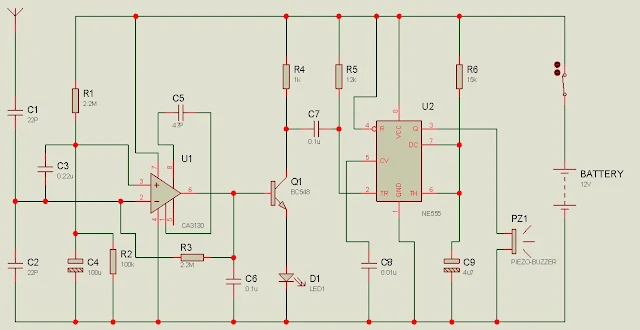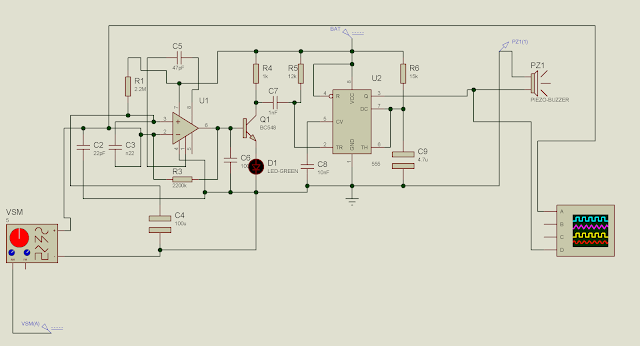Cell phone detector
Before looking at the circuitry of a the detector, we need to have some pre-knowledge and its constituents.A cell phone detector is used to detect signals from an activated cell phone at a defined distance. In our case, the distance can range up to 1.5 meters.
A
basic digital cell phone contains just a few
individual parts:
—A
circuit board containing the brain of the phone
—An
antenna
—A
Liquid Crystal Display (LCD) screen
—A
keyboard
—A
microphone
—A
speaker
—A
battery
The circuit board is the heart of the system and contains several chips. The analog-to-digital and digital-to-analog conversion chips that translate the outgoing audio signal from analog to digital and the incoming signal from digital back to analog. The digital signal processor (DSP) is a highly customized processor designed to perform signal-manipulation calculations at high speed. The microprocessor handles all the functions for the keyboard and display, deals with command and control signaling with the base station and also coordinates the rest of the functions on the board. The Read Only Memory (ROM) and Flash Memory chips provide storage for the phone's operating system and customizable features, such as the phone directory.
—Microphones
have been featured on cellular phones since they first came out. In the last 10 years the microphones have
become dual purpose; now
there
are programs on the phone that record voice to file such as a simple voice
recorder or as part of a video.
—Almost
every available cellular phone today has a connection to the Internet. This allows users to transfer files and data
wherever they are. Cellular phones can send emails, text messages, picture text
messages, video text messages, and upload data to the Internet.
—Since
cameras and music have become popular features on cellular phones,
manufacturers have started adding memory card slots. These memory cards provide
expanded memory and allow more pictures to be taken or music files to be
stored. Most memory cards can plug
directly into the computer for easy data transfer.


